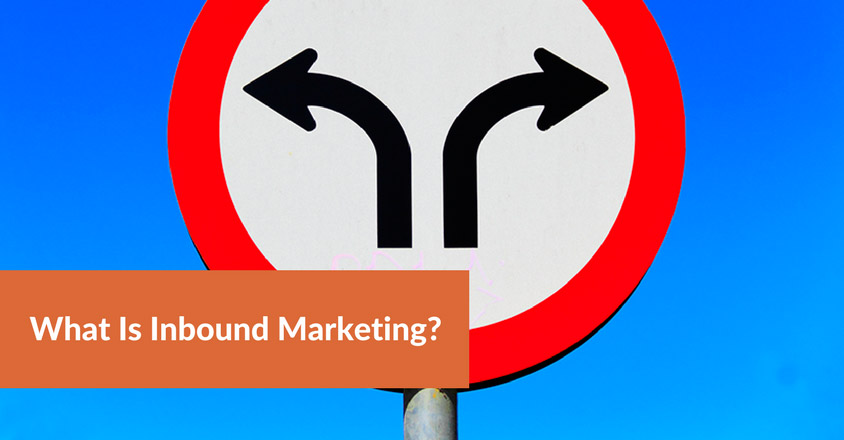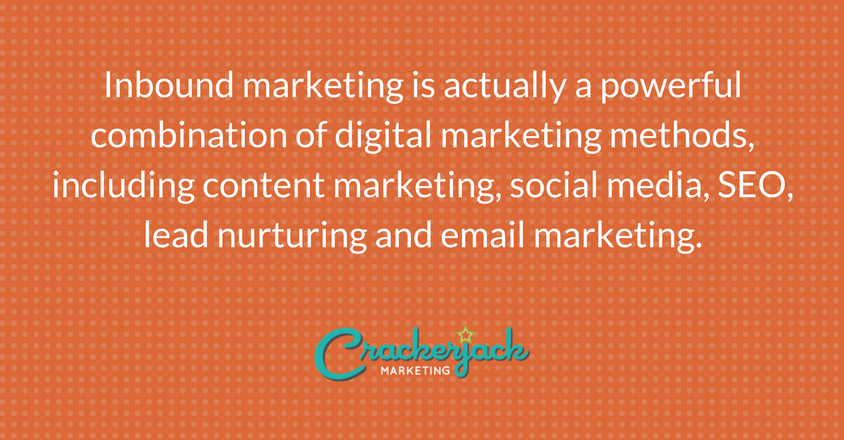What Is Inbound Marketing?
Inbound marketing, while not an entirely new concept, has become quite popular, particularly with B2B marketers and with consumer marketers too. The reason for its growth is due in large part to some of the new ways that people communicate: via the social web and blogs.
Inbound marketing is actually a powerful combination of digital marketing methods, including content marketing, social media, SEO, lead nurturing and email marketing. And it’s considered today’s “new” way of marketing. In the old world of marketing, you could buy people’s attention – throw enough money at TV ads and you’d get a huge audience. But in today’s increasingly fragmented media market, and with those new communications methods, that’s very hard to do, so there has to be a better way.
Source: Mashable
With inbound marketing, your purpose is clear. You want to convert strangers into customers and fans. Essentially, you use inbound marketing strategies to help the right people find you and not only buy from you but also send new prospects your way. This means not only generating leads but also building awareness, gaining trust, developing relationships, and building reputation.
The Inbound Marketing Continuum
Think of inbound marketing as a continuum. At the start of the continuum, you’ll want to attract as many strangers to your company as possible, to introduce them to you in the hopes that your content and concepts will resonate. The far end of the continuum is where you work to keep current customers engaged and energized.
HubSpot’s marketing methodology for the inbound continuum looks like this:
Source: HubSpot
And here’s how it works:
- Attract: Draw strangers to your brand via social media, targeted keywords, blog posts and web pages. This is the start of the continuum and where you’ll cast a wide net.
- Convert: Convert your visitors into leads with well-crafted forms, landing pages and calls to action.
- Close: Use email, workflows, lead scoring, and CRM integrations to transform the strangers still in the continuum from leads to customers.
- Delight: This is where your happy customers become your brand promoters. Email, workflows, social media content and calls to action help get them there. This is the end of the continuum, but really only the beginning of your relationship with your customers – hopefully they’ll stay in this stage for a long time!
Content for Inbound Marketing
Providing your audience with valuable educational and/or entertaining content means understanding each phase of the continuum and providing the right content at the right time. To do this, you’ll have to first understand where your prospects are in the continuum and then provide content that matches that phase, answers their unasked questions and shares the information they need to trust, take further interest, and eventually, buy.
Inbound marketing versus outbound marketing is the difference between earning and buying. With inbound marketing, you’re earning your audience’s interest and getting prospects to opt-in to you while outbound marketing requires you to buy their interest, an approach that often fails. Inbound marketing does take work, but it can produce cost-effective results. According to HubSpot, over 80 percent of marketers say inbound market brings positive ROI. And let’s face it, it’s as hard to buy interest and loyalty as it is to purchase respect.
This is the first in a series of posts on inbound marketing. For others in the series, see Creating Customer Personas for Inbound Marketing, 7 Key Assets for Inbound Marketing and 4 Steps to Creating a Content Marketing Engine.
Stephanie Schwab
Latest posts by Stephanie Schwab (see all)
- Small Business Best Practices For Outsourcing Business and Marketing Activities - March 12, 2023
- Social Media and Live Events: Promoting Your Small Business - January 30, 2023
- Why Is the Customer Journey Important for Small Business Owners? - November 29, 2022
- Finding Your Brand Voice - July 27, 2020
- Business Social Media: Farming vs. Fishing - January 9, 2018






This is a great read!
Content that aims to serve and actually contribute to the conversation that is ongoing on the internet, paired along with great white hat SEO, is an amazing strategy for inbound marketing.
Looking forward to more!